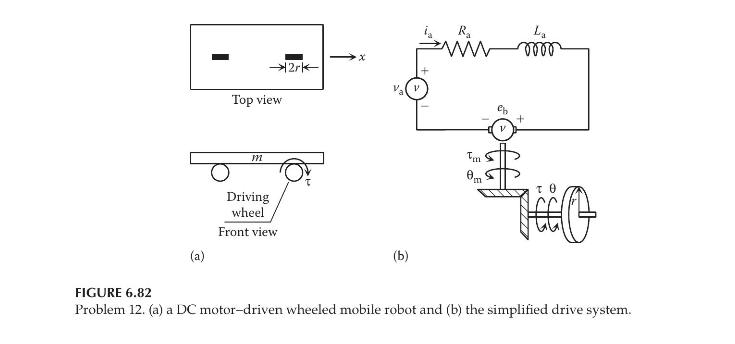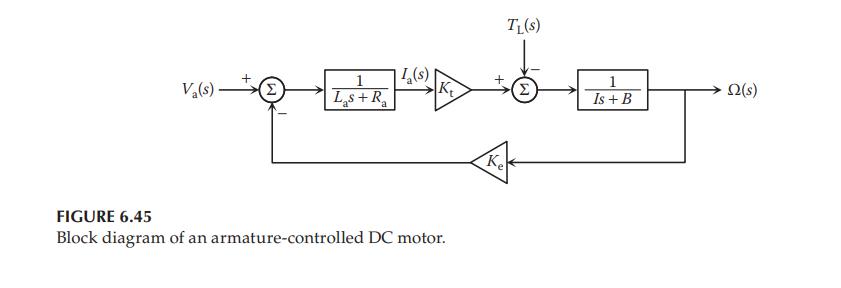Consider the DC motor-driven wheeled mobile robot shown in Figure 6.82a, where (m) is the mass of
Question:
Consider the DC motor-driven wheeled mobile robot shown in Figure 6.82a, where \(m\) is the mass of the wheeled mobile robot, \(r\) is the radius of the driving wheel, and \(\tau\) is the torque delivered to the wheeled mobile robot by the DC motor. For simplicity, the motion is restricted to one spatial dimension. Figure \(6.82 \mathrm{~b}\) shows the simplified drive system, including the equivalent electrical circuit of the DC motor, the rotor of the DC motor, the gears, and the driving wheel. The motor parameter values are armature inductance \(L_{\mathrm{a}}=0.001 \mathrm{H}\), resistance \(R_{\mathrm{a}}=2.6 \Omega\), back emf constant \(K_{\mathrm{e}}=0.008 \mathrm{~V} \mathrm{~s} / \mathrm{rad}\), and torque constant \(K_{\mathrm{t}}=0.008\) \(\mathrm{Nm} / \mathrm{A}\). The mass moment of inertia of the motor can be negligible. The gear ratio is \(N=\theta / \theta_{\mathrm{m}}=\tau_{\mathrm{m}} / \tau=1 / 3.7\). The wheel and axle mechanism converts the rotational motion to translation, and the wheel radius is \(r=0.00635 \mathrm{~m}\). The mass of the cart is \(m=0.455 \mathrm{~kg}\).
a. Derive the equations of motion of the system.
b. Choose the armature current \(i_{\mathrm{a}}\), the robot displacement \(x\), and the robot velocity \(\dot{x}\) as state variables, and find the state-space form of the system.
c. Assuming zero initial conditions, find the transfer function \(X(\mathrm{~s}) / V_{\mathrm{a}}(\mathrm{s})\).
d. A Following Figure 6.45, build a Simulink block diagram by using the differential equations obtained in Part
(a) and find the displacement output \(x(t)\) when the voltage applied to the DC motor is a pulse function, \(v_{\mathrm{a}}(t)=1 \mathrm{~V}\) for \(1 \leq t \leq 2 \mathrm{~s}\).
e. Build a Simscape model of the wheeled mobile robot and find the displacement output \(x(t)\) when the voltage applied to the DC motor is a pulse function, \(v_{\mathrm{a}}(t)=1 \mathrm{~V}\) for \(1 \leq t \leq 2 \mathrm{~s}\).


Step by Step Answer:

Modeling And Analysis Of Dynamic Systems
ISBN: 9781138726420
3rd Edition
Authors: Ramin S. Esfandiari, Bei Lu





